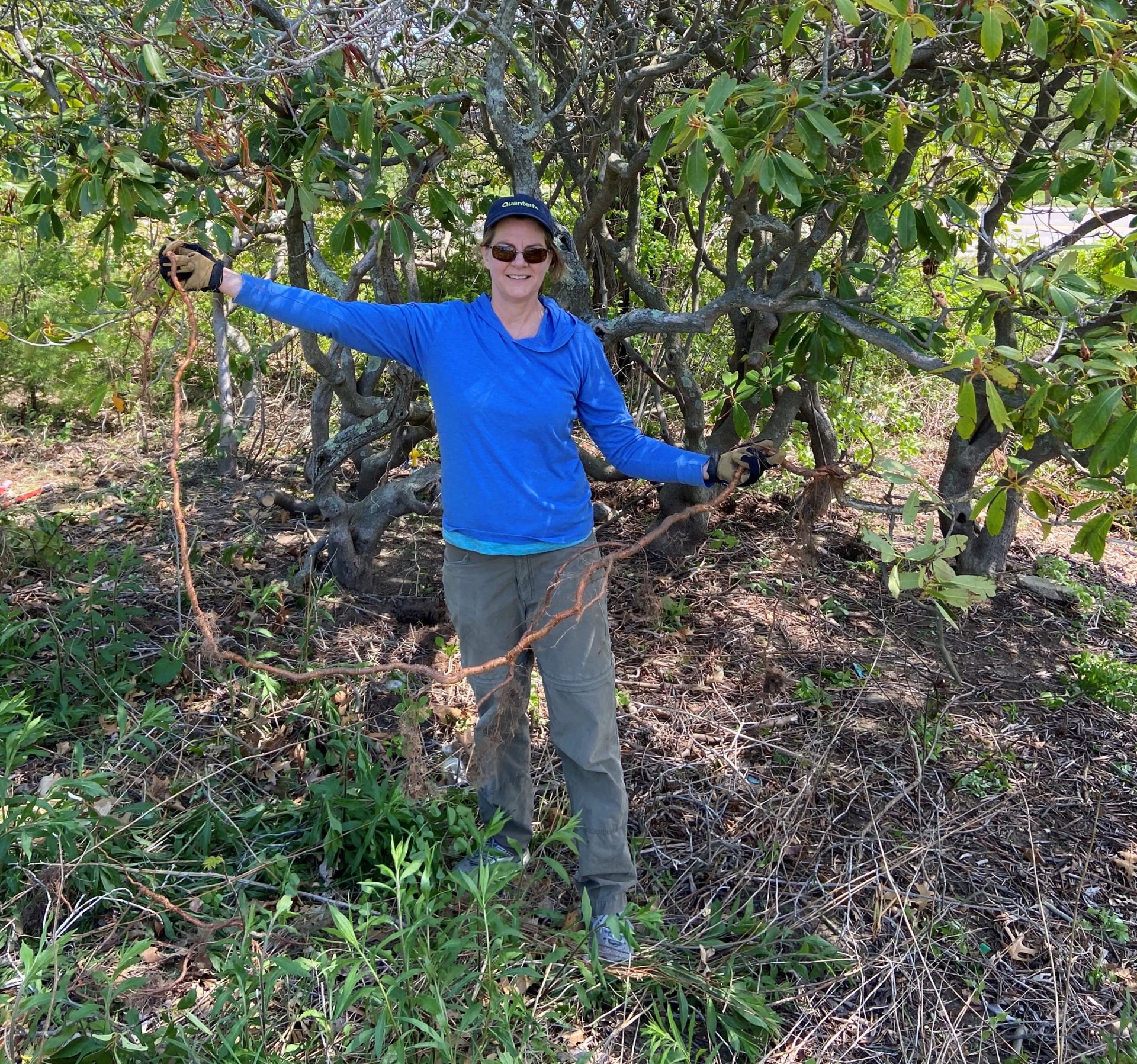
by Wayne Mezitt
By its very nature, the act of gardening disrupts nature’s master-plan to cover every available soil surface with vegetation. Most of us who garden have in mind a different approach which favors the plants we want to enjoy more than what grows there naturally. Unless we’re gardening in an already-cleared site, we need to make space for our desired plants by removing those plants that are currently using those garden spaces. We also need to continually maintain our gardens by removing weeds that crowd-out desirable plants, hoard moisture, nutrients and sunlight, host pests and diseases and look unsightly. The real secret is to choose desirable plants that will proper by helping fulfill nature’s requisite for no open-ground without vegetation.
Ask any gardener, and it’s likely you’ll hear that the single most common mid-summer garden challenge is management of weeds. A weed is generally considered to be a plant that grows aggressively and reproduces quickly where it is not wanted. In fact, many plants considered weeds in some regions are valued as desirable food, wildflower or ornamental plants in other areas. Dandelion, teasel, purslane, goldenrod, Euonymus, sweet-fern and sumac are several examples.
Weed management is complicated and more challenging than most people think, and that’s probably because it’s difficult to consider a lot of the factors involved. Proper weed management requires knowing the identity of the weed, understanding how it grows and determining the most effective way to eliminate it from the area under consideration.
Weeds can be categorized as annuals, biennials or perennials. All weeds germinate from seed when conditions are right and grow quickly, potentially dominating a previously pristine patch of ground. The best weed control is to eliminate them when they first appeare (pull them out while they are small!), or better, to prevent germination by mulching or applying pre-emergent weed control. Particularly with perennial types, once weeds become established in the ground, management becomes more difficult. The fundamental principle is to control weeds before they begin producing seed.
Perennial weeds re-grow from their roots and underground stems and also produce seed. Herbaceous perennials die back to the ground in winter, making them difficult to spot until their new growth appears, while the stems of the woody types are visible year round.
Some perennial weeds have stoloniferous roots that run in the ground and tend to break off when pulled, each root piece potentially growing into a new plant. Perennial vines attach themselves to desirable plants, often winding and climbing in ways that make their removal very challenging. Some established perennial weeds require chemical herbicides to eliminate them completely. Many of these are now classified as “invasive” which designates them as a serious threat to native plants in natural areas.
Mulching with 2 to 4 inches of loose organic matter like bark mulch, ground-up leaves or wood chips helps discourage weed germination. Some gardeners use plastic or fabric mulches and chemical herbicides to prevent germination. Weed management choices depend upon a variety of style and plant-type considerations, and many people prefer to limit chemical techniques.
Effective weed management requires planning, persistence, monitoring, and often a good measure of sweat in the summer. Some weeds can be physically harmful if poisonous to those of us who are susceptible, so taking appropriate precautions is prudent. But for all the effort needed for proper weed management, the reward of an attractive, well-maintained garden is well worth the effort.
[CHART]
| Examples of Weed Types * Annual Weeds germinate, flower, produce seed and die in one year. Common examples in this part of New England are crabgrass, purslane, lambsquarters and ragweed. Biennial Weeds germinate and grow their foliage the first year, only flowering and producing their seed after going through winter. Some typical examples in this region are garlic mustard, burdock, brome grass, evening primrose and Queen-Anne’s lace. Perennial Weeds have long-lived root systems that persist year after year. Simple root systems that are relatively easy to remove intact Herbaceous (tops die to the ground in winter). Examples are dandelion, pokeweed and bull thistle. Woody plants whose above ground parts are visible all year Trees and shrubs: autumn olive (Eleagnus), buckthorn (Rhamnus), barberry (Berberis), wild rose and burning-bush (Euonymus alatus) Vines: poison ivy, nightshade. Stoloniferous or persistent roots from which new plants re-grow when roots are broken off or left in the ground Herbaceous: Examples are bindweed, quackgrass (evergreen), mugwort (Artemisia vulgaris), Canada thistle, hairy vetch, clover (evergreen), groundnut (Apios americana), horse nettle (Solanum carolinense), black swallow-wort (Cynanchum louiseae), kudzu. Woody plants including: Trees and shrubs: Japanese knotweed, sumac (Rhus), sweet fern (Comptonia), tree-of-heaven (Ailanthus), bramble (Vitis). Vines: Bittersweet (Celastrus), Virginia creeper, bull briar (Smilax), porcelain berry (Ampelopsis brevipedunculata), English ivy (Hedera), wild grape (Vitis), trumpet vine (Campsis), wisteria. *Categories and list compiled by Hort-Sense, 2022 |









